Automobili Lamborghini S.p.A., commonly referred to as Lamborghini, is an Italian manufacturer of sports cars, based in the small Italian village of Sant'Agata Bolognese, near Bologna. The company was founded in 1962 by businessman Ferruccio Lamborghini, who own ed a successful tractor factory, Lamborghini Trattori S.p.A.. Lamborghini is now a subsidiary of the German luxury car manufacturer, Audi AG, which is in turn a subsidiary of Volkswagen Group. The Reventón, a limited special supercar, is one of the fastest and most expensive of the Italian supercars. Ferruccio Lamborghini went to meet Enzo Ferrari at the Ferrari factory to complain about the quality of the clutch in his Ferrari 250 GT. An infuriated Enzo Ferrari sent him away telling him to go drive his tractors because he was not able to drive cars. Lamborghini went back to his factory to have the Ferrari's clutch dismantled and found that the clutch in the Ferrari was a product of the manufacturer who supplied the clutches used in Lamborghini tractors. Lamborghini installed a stronger clutch from his factory's warehouse into his Ferrari and solved the clutch failure. Furious with Enzo Ferrari's arrogant and aloof manner, Ferruccio Lamborghini promised himself he would never own another Ferrari, and would beat Ferrari at his own game, by creating a superior sports car of his own[citation needed]. Ferruccio decided that his car was to have a V12 engine. Giotto Bizzarrini, a former Ferrari engineer with experience with the development of the Ferrari V12, was contracted to design the engine. The engine featured aluminum construction, a short stroke, a seven main bearing crankshaft, forged aluminum pistons, two big bore valves per cylinder, and two overhead camshafts per cylinder bank, each camshaft having its own half-engine-speed sprocket with silent chain. The engine developed 350 horsepower (260kW). The body was designed by Franco Scaglione. Born under the sign of the Taurus, Ferruccio Lamborghini used the bull as the badge to mark his new automobile. The Lamborghini 350GTV prototype was introduced at the 1963 Turin Auto Show. Lamborghini commissioned Carrozzeria Touring to design a more practical model. This was put into production as the 350GT. Sales of the 350GT totaled 130. The 350GT was followed by the 400GT. Profits from the 400GT and its predecessor gave the company ample capital to design its first supercar, the Lamborghini Miura. The chassis of the new Miura was introduced by Ferruccio himself at the November 1965 Turin Auto Show. The car's engine was transversely mounted. The styling was executed by Marcello Gandini in less than a year. The completed car was displayed at the March 1966 Geneva Auto Show. The car's name was taken from the famed fighting-bull trainer, Don Eduardo Miura. One hundred and eleven Miuras were sold in 1967. Seven hundred and sixty-one were made in total. The Miura propelled the company into the small world of exotic supercar manufacturers. The Espada, a four-seat car based on the Marzal concept car, was developed alongside of the Miura. The name Espada means sword in Spanish, and referred to the sword used by the matador in bullfighting. Using the 4-litre V12 in a conventional front engine layout, the low-slung touring car could attain a top speed of approximately 150mph (240km/h). An interesting feature of the Espada was a glass taillight panel that used the same taillights as the contemporary Fiat 124 Coupé. The Espada received minor improvements over its production, resulting in three distinct series. In 1971, Lamborghini produced the LP500 Countach prototype. The Countach was named after an Italian slang term uttered in surprise by Nuccio Bertone upon seeing the car for the first time. The production LP400 Countach was introduced three years later. The prototype was the first car to sport Lamborghini's now-traditional scissor doors, along with vertically mounted rear air intakes. The Countach's V12 engine initially had the same 4-litre capacity as the Miura, but this was enlarged to five litres upon the introduction of the LP500S Countach in 1982. The Countach was one of the first cars to use the Pirelli "P-Zero" tires. Lamborghini's test driver would often demonstrate the Countach's abilities to journalists. A detail noted by journalists was the manner in which a Countach was reversed; the driver would raise the door and sit on the door sill. The company suffered a major setback in 1972, when a massive tractor order from a South American nation was canceled. In preparation of the order, Lamborghini had made upgrades to its factories to accommodate the increase in demand. Financial complications forced Ferruccio to sell part of his share of the tractor factory to Fiat. The tractor business was eventually acquired by SAME (now Same Deutz-Fahr). Lamborghini tractors are still sold today, as part of the SAME Deutz-Fahr Group. Eventually, the automobile division became self-sufficient and profitable. Lamborghini, however, sold all his remaining stock in the company to a Swiss investor and left the automotive industry. The 1970s oil crisis plagued sales of high performance cars. In 1978, Lamborghini declared bankruptcy. An Italian court was appointed to find a buyer, and the Swiss-based Mimran brothers took over the company in 1984, after managing the company for four years while it was in receivership. The company remained solvent under Mimran's control, selling the Countach, the Jalpa, and the LM002 during this time. In a surprise move, the company was sold to the Chrysler Corporation in 1987. Lamborghini at the time was working on the Countach's successor, the Diablo. Chrysler brought its resources, including design input, pollution controls, and new manufacturing techniques, into this development. Chrysler's experience with the design of mass market vehicles improved areas of practicality and comfort that had been neglected earlier, including noise, vibration, and harshness (NVH), engineering, and ergonomics. In 1994, poor economic circumstances at Chrysler forced them to sell[citation needed] Lamborghini to an Indonesian investment group headed by Tommy Suharto. These owners sold the company in the late 1990s, also while suffering from poor economic circumstances. By then however, the German car company Audi AG had gained interest in the ailing Italian company, and in 1998, in a complex series of transactions, Audi AG became the sole owner of Automobili Lamborghini. Lamborghini's latest owner once again greatly influenced the design of its cars, such as today's Murcielago. Audi's vast technical resources helped produce one of Lamborghini's most sophisticated cars to date. Jorge Antonio Fernández García set up his company, Automóviles Lamborghini Latinoamérica (based in Argentina), in 1994, with special permission granted by Automobili Lamborghini in Italy. The first cars, called the Eros and the Coatl, were presented in 2000. These are hand-made Diablo-based special sportscars, and from 2003 they are offered for sale only in South America. Official site: Automóviles Lamborghini Latinoamérica sita oficial The Lamborghini badge with its connotations of exotic motoring, has been licensed for use on unrelated products such as mountain bikes, watches, cigar lighters, humidors, sunglasses, and notebook computers from Asus in Taiwan. Lamborghini's outrageous supercar models have brought Lamborghini much fame. The Miura, the Countach, the Diablo, and the Murciélago continue to be some of the most desired super cars of all time[citation needed]. The current (2008) range consists of the Murciélago LP640, the Murciélago LP640 Roadster and the smaller, less expensive Gallardo LP560/4, Gallardo Spyder and Gallardo Superleggera. All are extremely fast, mid-engined 2-seaters. The Murciélago LP640, the Murciélago LP640 Roadster and the Gallardo LP560-4 come with Lamborghini's standard four-wheel drive systems. Their styling is largely the work of Belgian designer Luc Donckerwolke. Future models may include a rear-wheel-drive version of the Gallardo, and possibly an SUV in the spirit of the LM002. The next generation of Lamborghini models will be penned by Walter de'Silva, who designed the 2006 Miura concept car, and who replaced Luc Donckerwolke as head of Centro Stile Lamborghini, Lamborghini's in-house design department. Ferruccio Lamborghini had set a rule that Lamborghini would not be involved in motor racing. He saw such a program as too expensive and too demanding in company resources.[citation needed] Consequently, no Lamborghini racing car was fabricated under his management. The closest the company came to building racing cars at that time was when the company's test driver Bob Wallace made a few highly modified prototypes based on existing models. Notable among these are the Miura SV based Jota and the Jarama S based Bob Wallace Special. Under the management of Rosetti, Lamborghini entered into an agreement with BMW to build a production racing car in sufficient quantity for homologation. However, Lamborghini found itself unable to fulfill their part of the agreement. The car was eventually developed in-house by the BMW Motorsport Division, and was manufactured and sold as the BMW M1. Lamborghini developed the QVX for the 1986 Group C championship season. One car was built, but lack of sponsorship caused it to miss the season. The QVX competed in only one race, the non-championship 1986 Southern Suns 500 km race at Kyalami in South Africa, driven by Tiff Needell. Despite the car finishing better than it started, sponsorship could not be found and the program was cancelled. Lamborghini was an engine supplier in Formula One between the 1989 and 1993 Formula One seasons. It supplied engines to Larousse, Ligier, Lotus, Minardi, and to a 'Lamborghini' team, although this last was not viewed as a works team by the car company. The 1992 Larousse/Lamborghini was largely uncompetitive but noteworthy in its tendency to spew oil from its exhaust system. Cars following closely behind the Larousse were commonly colored yellowish-brown by the end of the race. Late in 1991, a Lamborghini Formula One motor would be used in the Konrad KM-011 Group C sports car, but the car would only last a few races before the project was canceled. The same engine, badged as a Chrysler, by Lamborghini's then parent company, was tested by McLaren towards the end of the 1993 season, with a view to its use during the 1994 season. Although driver Ayrton Senna was reportedly impressed with the engine's performance, McLaren pulled out of negotiations, choosing a Peugeot engine instead, and Chrysler ended the project. Two racing versions of the Diablo were built for the Diablo Supertrophy, a single-model racing series held annually from 1996 to 1999. In the first year, the model used in the series was the Diablo SVR, while the Diablo 6.0 GTR was used for the remaining three years. Lamborghini developed the Murciélago R-GT as a production racing car to compete in the FIA GT Championship, the Super GT Championship and the American Le Mans Series in 2004. Their highest placing in any race that year was the opening round of the FIA GT Championship at Valencia, where the car entered by Reiter Engineering finished third from a fifth-place start. In 2006 during the opening round of the Super GT championship at Suzuka, a car run by the Japan Lamborghini Owners Club garnered the first victory (in class) by an R-GT. A GT3 version of the Gallardo has been developed by Reiter Engineering. A Murciélago R-GT entered by All-Inkl.com racing, driven by Christophe Bouchut and Stefan Mucke, won the opening round of the FIA GT Championship held at Zhuhai International Circuit, achieving the first major international race victory for Lamborghini. Lamborghini have for some years produced a larger V12 marine engine block for use in powerboat racing, notably the World Offshore Series Class 1. This engine is produced with a typical displacement of around 8500cc/510ci with an output of around 950hp (710kW). Lamborghini has had a number of owners:THE HISTORY OF LAMBORGHINI




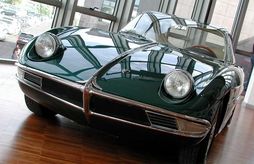
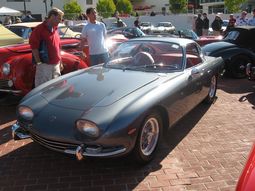
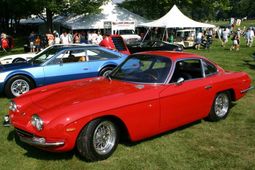
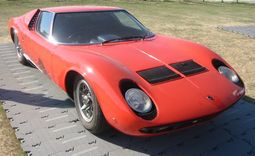
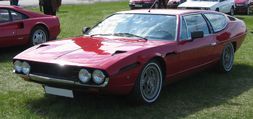
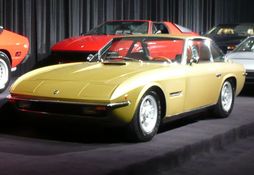
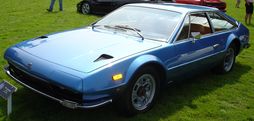
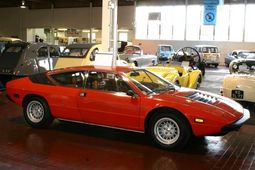
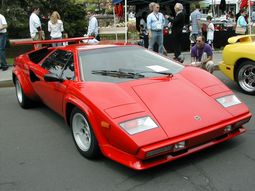
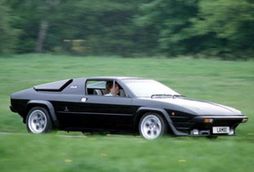
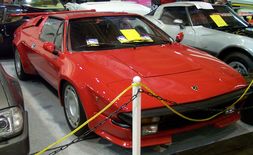
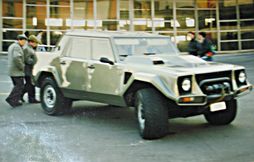
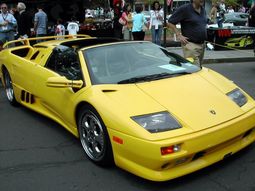
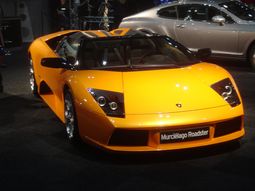
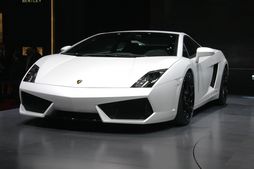
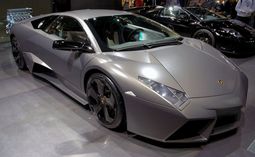

LAMBORGHINI
HISTORY
Origin
Under Ferruccio Lamborghini
Bankruptcy, Mimran, and Chrysler
Post-Chrysler: Megatech and Audi
LAMBORGHINI OF LATIN AMERICA
BADGE LICENSING
MODELS
Racing Models
See also: Modena (racing team)Marine Engines
OWNERSHIP
skip to main |
skip to sidebar
![Sparkline]()
Recent Posts
Auto Chronicle
BTricks
Download
Please Donate to this Blog
About
Total Pageviews
Rate Me on BlogHop.com!
![]()
![]()
![]()
![]()
![]() help?
help?
Powered by Blogger.
Search This Blog
Archives
-
▼
2008
(103)
-
▼
December
(81)
- SAN DIEGO AUTO SHOW
- Zavod- Russian Truck and Heavy Equipment Manufacturer
- ZAZ - Zucker- Ukrainian Manufacturer
- Yamaha Motor Company
- Volvo in Sweden
- Volkswagen- German Automobile Manufacturer
- AvtoVAZ - Russian Automobile Manufacturer
- Vauxhall Motors- UK Car Company
- UAZ- Ulyanovsky Avtomobilny Zavod - Russian Automo...
- Toyota Motor Corporation- Japanese Automobile Manu...
- Tatra- Vehicle Manufacturer in Czech Republic
- Talbot- Car Manufacturer
- Suzuki Motor Corporation- Japanese Manufacturing C...
- Subaru- Japanese Car Company
- SsangYong Motor Company KSE
- Smart- (short for Swatch Mercedes ART) - German M...
- Skoda - Czech Automobile Manufacturer
- SEAT - Spanish Car Makers
- Scion- Car Division of Toyota.
- Scania AB - Swedish Truck and Bus Manufacturer
- Saturn- Launched by General Motors
- Saab- Aircraft and Automobile Maker in Sweden
- Rover- British Automobile Manufacturer
- Rolls-Royce- BMW subsidiary
- Renault- French Vehicle Manufacturer
- Reliant- British Car Manufacturer
- RAF - Russian Manufacturer
- Proton - Malaysian National Car Manufacturer
- Porsche- German Manufacturer of Sports Cars
- Pontiac; A Marque of Automobile Produced by Genera...
- Plymouth- Automobile Brand of Chrysler Corporation
- Peugeot- French car brand
- Opel or Adam Opel AG- German Automobile Manufacturer
- Oldsmobile- US Manufacturer of Trucks
- Nissan Motor Co., Ltd- Japanese Automobile Manufac...
- Neoplan- German Bus and Coach Manufacturer
- Moskvitch/Moskvich- Russian Automobile Company
- Mitsubishi Motors Corporation- Japanese Automobile...
- MINI (BMW)- Automotive Brand Owned by the BMW Group
- MG- (Morris Garages) - British Sports Car Manufacture
- MERCURY -Automobile Marque of the Ford Motor Company
- MAZDA Motor Corporation
- MAYBACH - German Luxury Car Manufacturer
- MASERATI - Manufacturer of Racing Cars and Sports ...
- Mercedes Benz
- LOTUS -British Manufacturer of Sports and Racing Cars
- LINCOLN - American Luxury Automobile Brand
- LIAZ - Russian Bus Manufacturing Company
- LEXUS -
- LAND ROVER
- KAWASAKI
- KIA - South Korean automobile manufacturer.
- Lamborghini- Sports Cars Manufacturer of Italy
- LANCIA- Italian automobile manufacturer
- Isuzu Motors Ltd
- INFINITI - Nissan Motor's luxury brand
- JEEP - History
- JAGUAR - British-founded subsidiary of the Ford Mo...
- Iveco- European truck, bus, and diesel engine Man...
- Iveco- European truck, bus, and diesel engine Man...
- THE HISTORY OF HYUNDAI
- HUMMER- Military Vehicles
- HONDA - Japanese manufacturer of automobiles
- HINO - Japanese Manufacturer
- GREAT WALL MOTORS
- GMC - General Motors Corporation
- GEO- Manufacturer
- GEELY AUTOMOBILE- Chinese Manufacturer
- GAZ - Gorkovsky Avtomobilny Zavod
- FREIGHTLINER- Manufacturer of heavy duty trucks, c...
- FORD- FoMoCo- of Henry Ford
- FIAT- Automobile Manufacturer- Northern Italy
- FERRARI- Italian sports car manufacturer
- FAW- First Automobile Works
- EAGLE
- DODGE
- DAIHATSU- Japanese manufacturer of cars
- DAF- Dutch automobile company
- DACIA-Romanian car manufacturer
- CITROEN- French automobile manufacturer
- CHRYSLER
-
▼
December
(81)
Popular Posts
-
MUMBAI: India's Super Sports Car deals zoomed 20 for every penny a year ago that saw a log jam in the standard extravagance auto advert...
-
THE HISTORY OF SCANIA SCANIA AB Scania AB is a leading European truck, bus, and diesel engine manufacturer based in Södertälje, Sweden. The ...
-
THE HISTORY OF JAGUAR JAGUAR Jaguar Cars is a British-founded subsidiary of the Ford Motor Company famous for its luxury saloon and sports c...
-
THE HISTORY OF CITROEN CITROËN Citroën is a French automobile manufacturer, started in 1919 by André Citroën, today part of PSA Peugeot Citr...
-
The Volkswagen NMC - New Mid-sized Coupe - idea makes official the carmaker's arrangements for a style-headed vehicle to test the Mer...
-
THE HISTORY OF DAF DAF TRUCKS DAF is a Dutch automobile company, with its main offices in Eindhoven. The DAF company was founded in 1932, wh...
-
When eighteen % degrowth in sales volume throughout 2016-17, Honda Cars India registered over thirty eight % growth in Apr and expects to t...
-
THE HISTORY OF OLDSMOBILE OLDSMOBILE Oldsmobile (or Olds + Mobile) was a brand of automobile founded by Ransom E. Olds, and was produced in ...
-
2013 Lincoln subsequently MKZ Specifications Price: $36,800 with location (base); $49,955 (as-tested) Available: delayed December L...
-
It's been nearly four years since the current-generation Skoda Octavia made its debut in India. In that time, the car has sold largely ...
Copyright © 2011 Auto News and Reviews........... | Powered by Blogger
 7:27 AM
7:27 AM
 Auto Blogger
Auto Blogger

 Posted in:
Posted in: 











0 comments:
Post a Comment